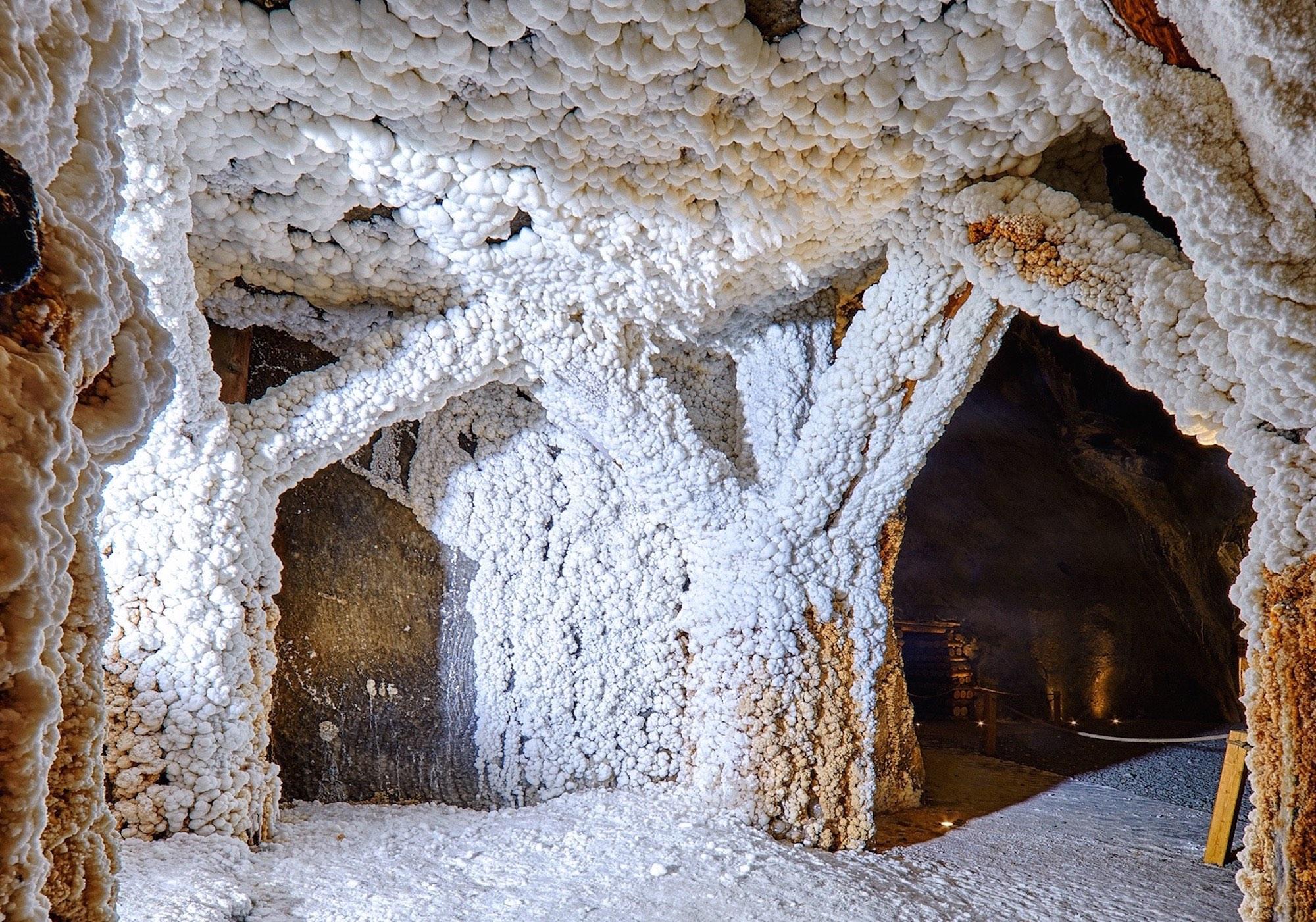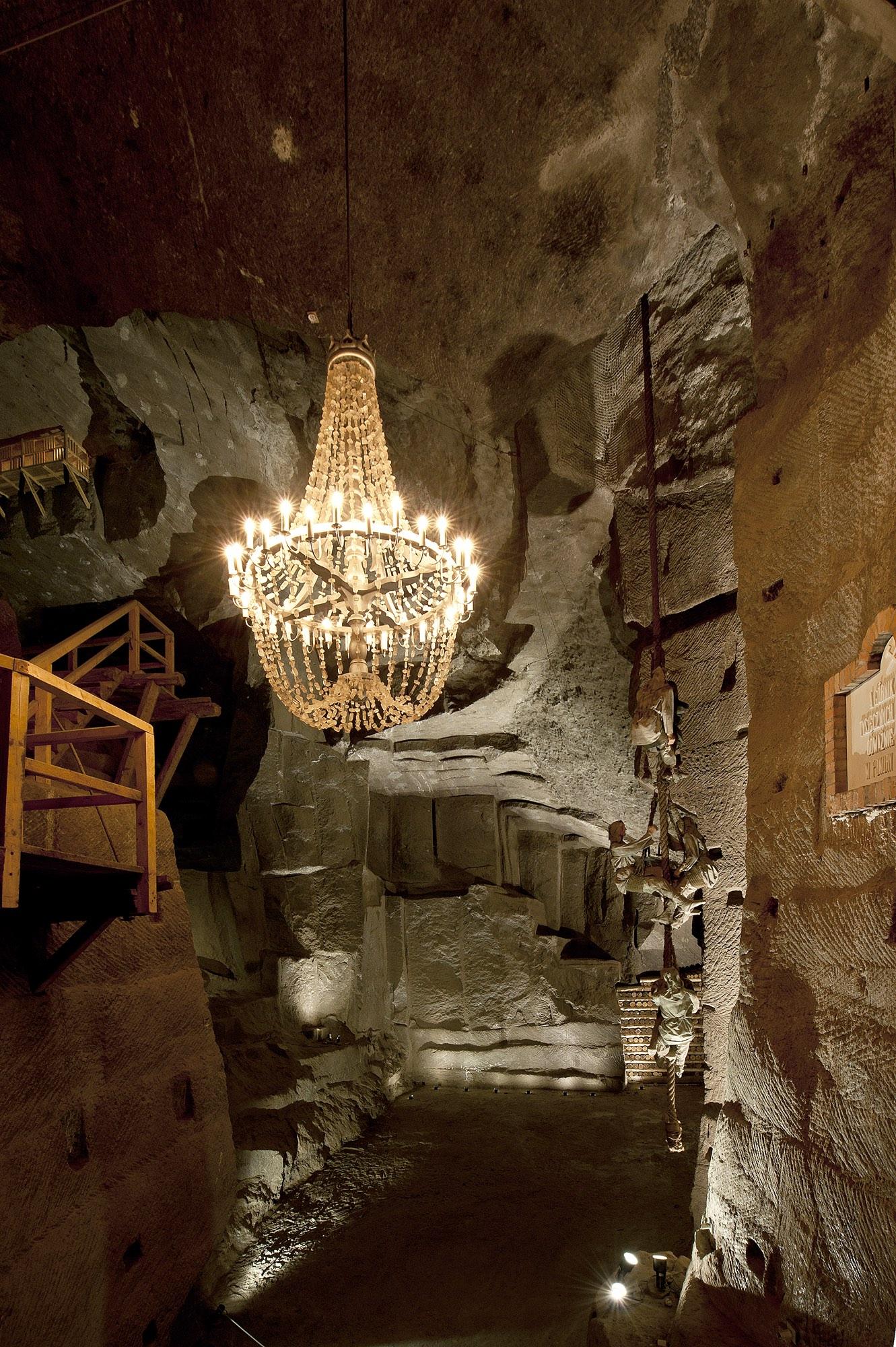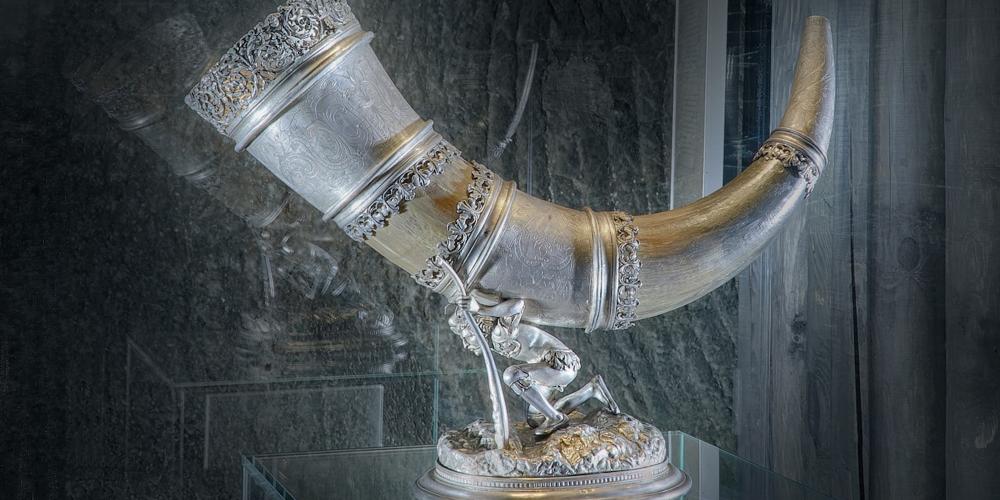Cracow Saltworks Museum Route in Wieliczka Salt Mine

The 19 chambers of the museum provide a wealth of information about the Cracow Saltworks, presented chronologically and thematically in a peaceful and contemplative space. The geological exhibit explains how the salt bed was created at the foot of the Carpathian Mountains. Visitors will see beautiful examples of salt crystals, unique in the world, and other forms you've never seen before: salt hair, salt trees, stalactites, stalagmites, and columns.

In successive chambers, guests follow the history of the Wieliczka settlement, saltworks and mining activities from Palaeolithic to modern times. See the nearby archaeological finds from various epochs and learn how salt was brewed here 3,500 years ago. In the historical exhibit, you'll see the most important documents from the 13th and 14th centuries related to the Cracow Saltworks—one of the largest enterprises of medieval Europe, and Poland's oldest company (note the older spelling for Kraków). You'll see old portraits of the Saltworks managers and royal owners, the oldest European mining textbooks, unique centuries-old maps of the mines, and an illuminated model of 17th century Wieliczka at the scale of 1:100.

The museum is filled with old tools and mining equipment, all original and from the mine. You'll learn about salt extraction methods and tools: simple wedges, pickaxes, and monstrous electric drills. Guests will also learn about the evolution of mining transport: from carrying salt in bowls by medieval diggers to Siemens traction engines from the 20th century. You'll be impressed with the massive horse-drawn treadmills from the 18th and the 19th century and other devices—wheels, crosses, and winches—used to lift massive blocks and bags of salt. You'll see how the mine was lit, ventilated and de-watered in different ages. You'll also learn about how fires were extinguished and how workers tackled other forms of danger.

You'll admire vast, majestic chambers including Maria Teresa II and Saurau, which present the historical methods of mining the salt bed. Look at their vaults and walls, the slips and traces of pickaxes from centuries ago. Saurau is the largest mining pit in the mine, from which 16,000 cubic metres of salt was extracted. The Długosz Chamber, currently used as a conference and performance hall, was fully carved in the largest of the recognised Wieliczka salt lumps.
The museum ends at the Aleksandrowice II Chamber—the newest chapel in the mine—devoted to St. John Paul II, the Polish pope who came from a town near Kraków and used to visit the mine. Its ultramodern interior and psychedelic multimedia experience will surprise you.
Cracow Saltworks Museum Route in Wieliczka Salt Mine
High season (1st April-31st October):
7:30 - 19:30
**Low season (2nd November-31st March): **
8:00 - 17:00
Joint ticket is applicable for Tourist Route and Museum Route. For the price of one ticket and guide service, tourists may visit:
- Tourist Route levels I – III, length of route: 2.5 km, estimated sightseeing time: 1.5 hours
- Break: approx. 20 minutes
- Museum Route exhibition on level III, length of route: 1.5 km, estimated sightseeing time: 1 hour
Price List on wieliczka-saltmine.com >
Organized groups may contact [email protected]

